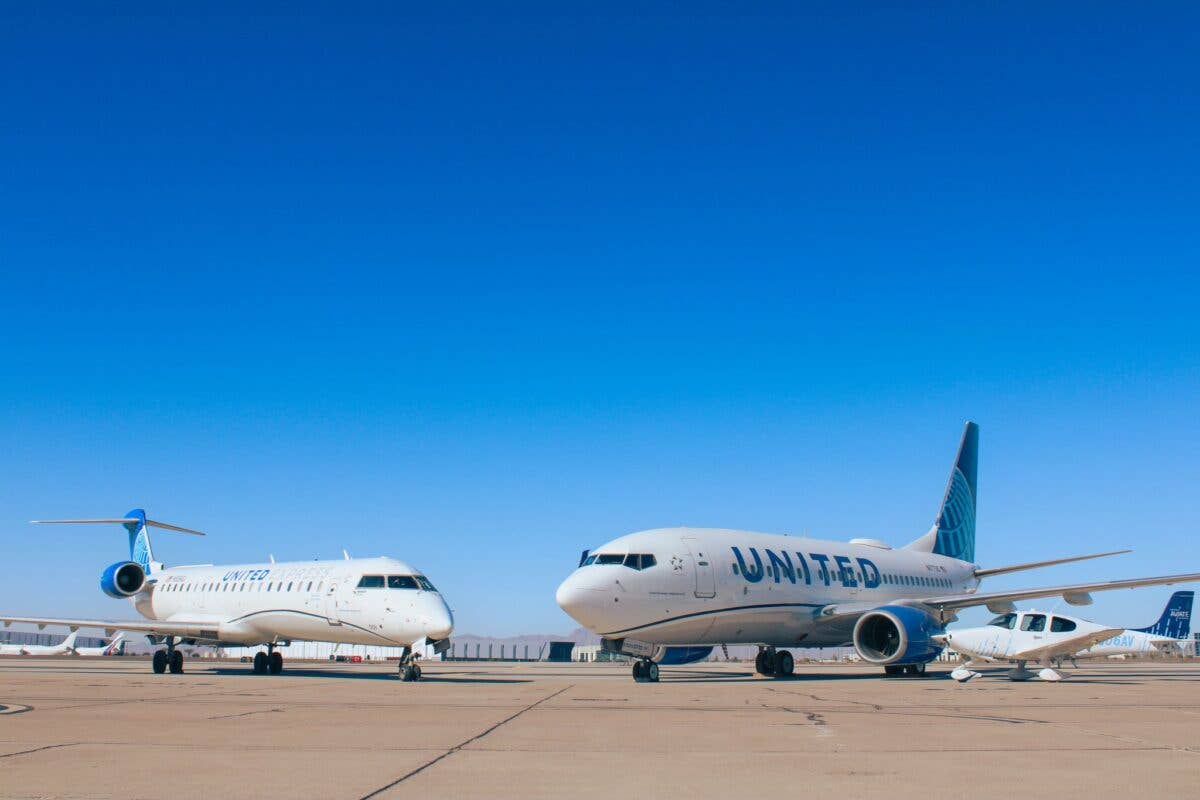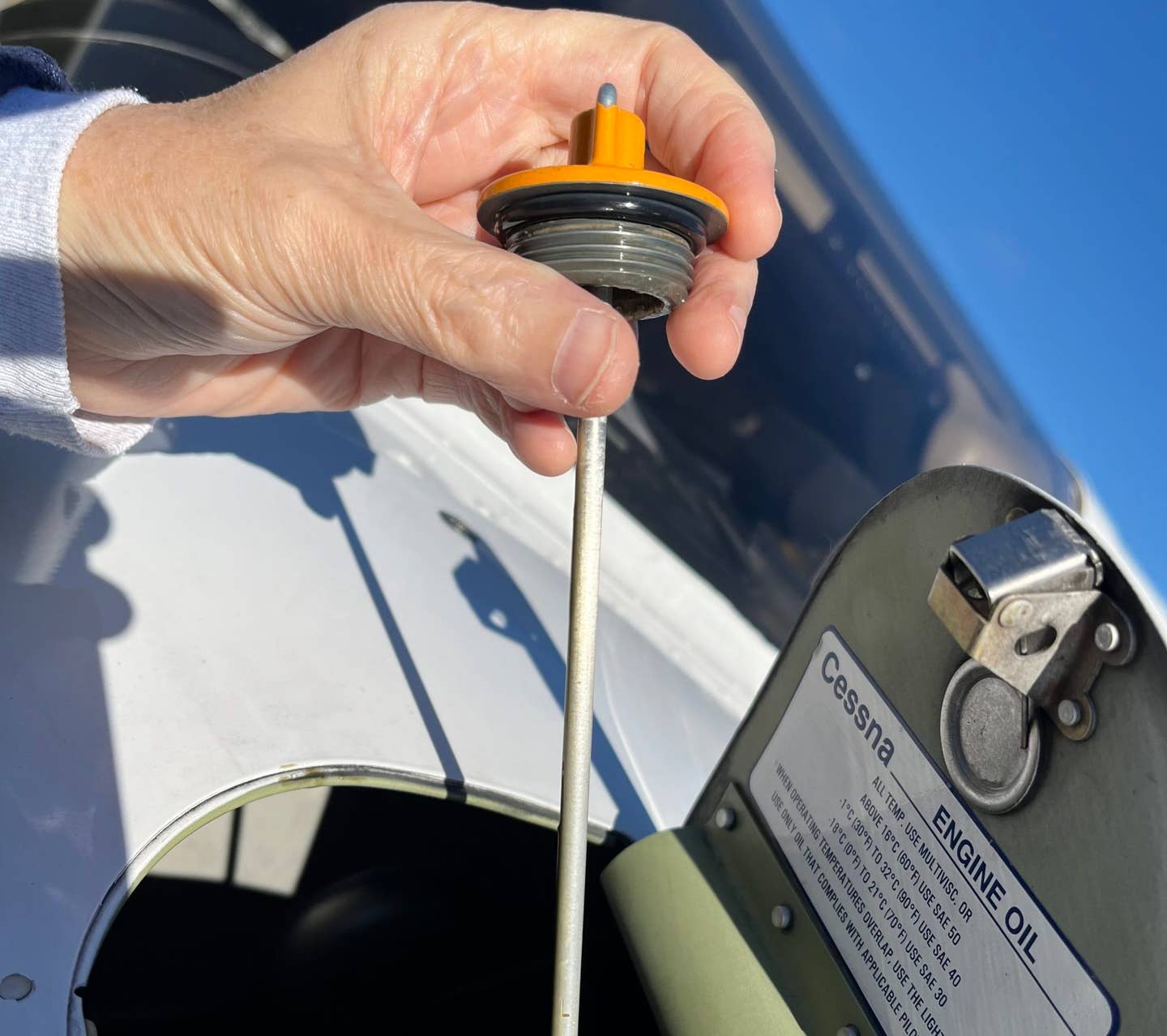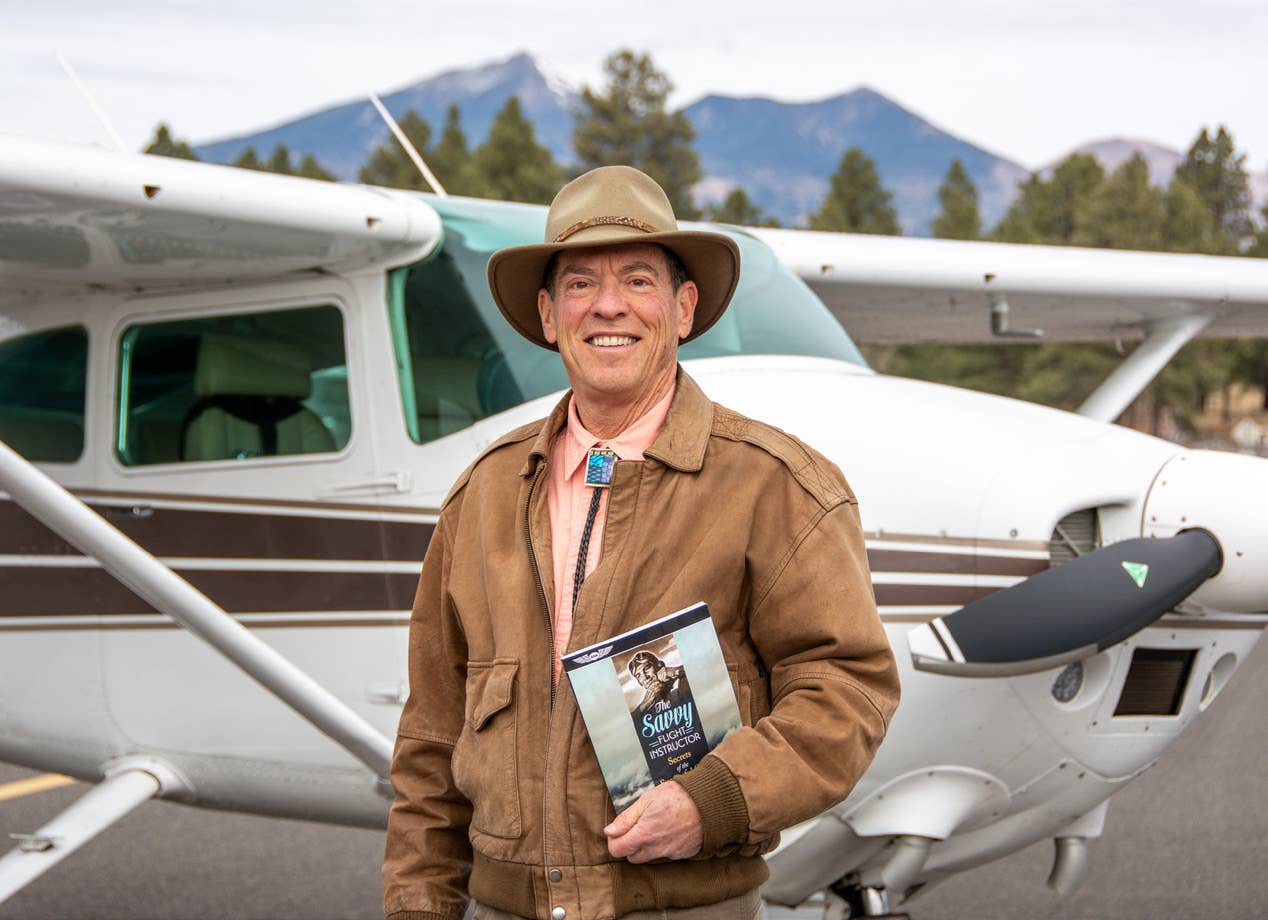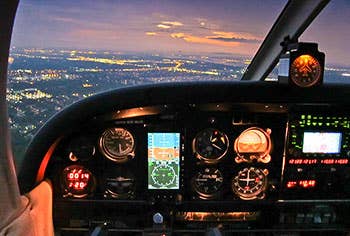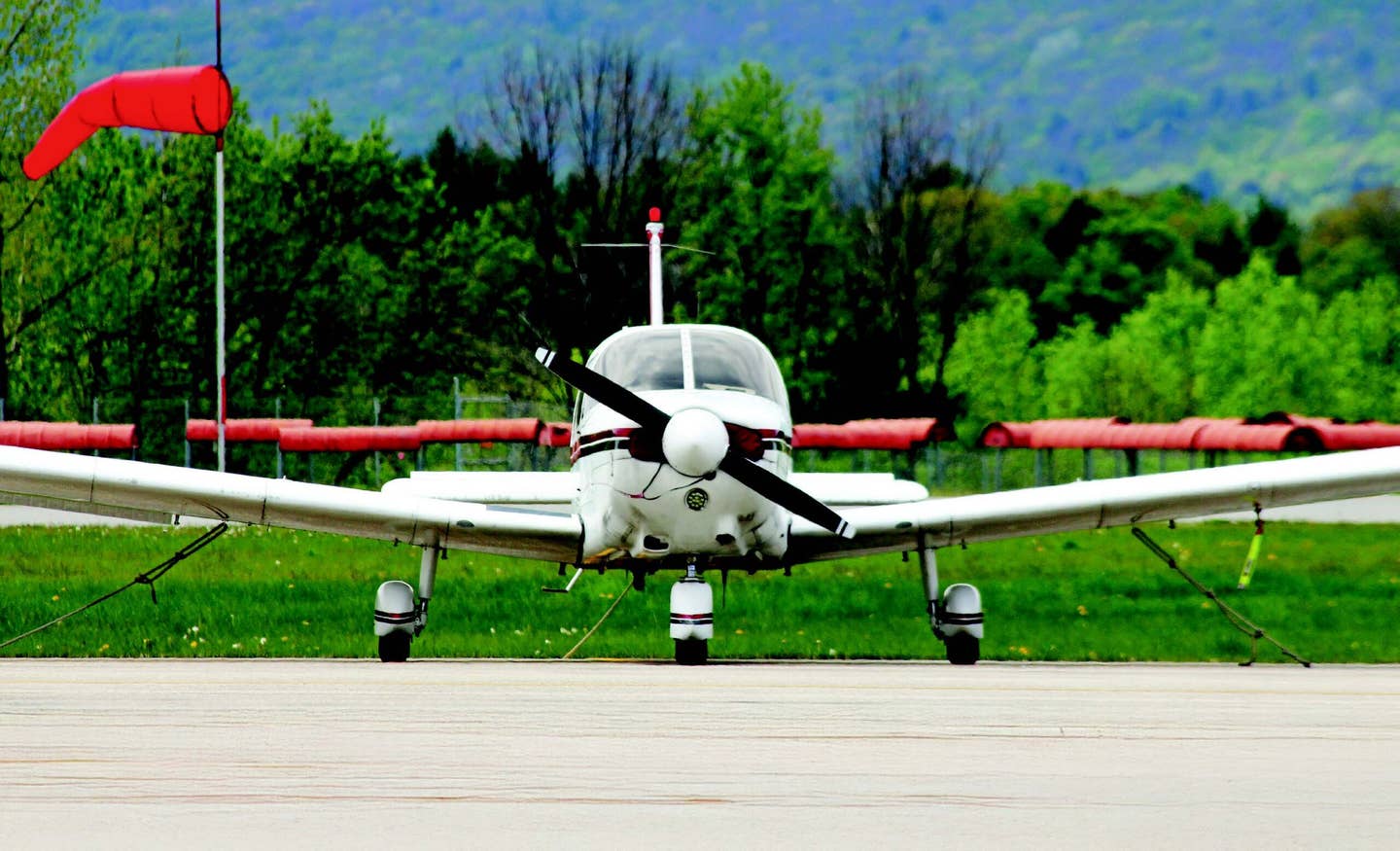The Bomber That Created a Bridge to Modern Airliners
Ride along on a ‘Microsoft Flight Simulator 2020’ journey in a Boeing 307 Stratoliner.

The Boeing 307 Stratoliner in Microsoft Flight Simulator 2020. [Courtesy: Patrick Chovanec]
Today in Microsoft Flight Simulator 2020, I’ll be flying the Boeing 307 Stratoliner, the first commercial airliner with a pressurized cabin that shared much of its DNA with the B-17 bomber.
In 1935, the major airlines in the U.S. had a problem. They had contributed $100,000 each for Douglas Aircraft to develop a four-engine successor to the two-engine DC-3. But it was clear that the new DC-4 had problems and would be delayed. So they dropped out of the program and TWA (Transcontinental & Western Air) approached Boeing Corp. to see if it could adapt its promising new B-17 bomber into a passenger plane.
Keeping the B-17’s wings, tail, engines, and landing gear, Boeing designed a new cigar-shaped pressurized fuselage, and the result was the Boeing 307 Stratoliner. I’m here at Chicago Midway Airport (KMDW) in June 1940, where one of the five brand-new Stratoliners just delivered to TWA is preparing for the next leg of its regular service from New York to Los Angeles.
For anyone acquainted with the silhouette of the famous B-17, the Stratoliner should look strikingly familiar.
Because of its wider fuselage, the Boeing 307 has a slightly larger wingspan (107 feet, 3 inches versus. 103 feet, 9 inches), with exactly the same length (74 feet, 4 inches). The wings are metal and contain three fuel tanks each, carrying a total of 1,700 gallons. The flaps are also metal and powered electrically. The ailerons, however, are fabric over a steel skeleton to reduce the physical force the pilot has to exert to move them. The elevators and rudder are the same. They are all entirely mechanical controls that rely on the pilot’s physical strength to manipulate—no hydraulics.
The prototype of the Stratoliner actually stalled and went into a spin in March 1939, crashing and killing 10 aboard. The problem turned out to be the tail, which was redesigned and incorporated into all subsequent B-17s from that point on.
The landing gear—the same as on the B-17—are raised and lowered by the hydraulics system, which also powers the brakes. When raised the wheels still protrude enough from the bottom side of the wing to cushion a belly landing.
Just like the B-17, the Stratoliner is powered by four Wright GR-1820 Cyclone air-cooled 9-cylinder radial engines with a supercharger to perform at higher altitudes and variable-pitch propellers. They produced slightly less horsepower (1,100) than the variant used on the B-17.
The Stratoliner’s five-person crew consists of a pilot, copilot, and flight engineer, along with two flight attendants. There is also a fourth seat for a navigator in the cockpit. Directly in front of the pilot and the copilot is a typical “six-pack” of instruments, though the arrangement is not yet standardized. To the left is a radio altimeter to gauge agl—helpful when flying over mountainous terrain.
On the overhead panel are radio navigation instruments and the switches for starting the engines and turning on lights. At bottom left, an anachronistically modern autopilot had been installed. We won’t be using the modern autopilot, but instead the Sperry Gyropilot appropriate to the period, located in the center of the center panel. Above it are the engine gauges showing manifold pressure and rpm, and below are the engine temperature gauges.
The power controls—in fours, one for each engine—are on the central pedestal, where both pilots can reach them. Black is throttle, red fuel mixture, and blue propeller rpm. The large white knob locks the tailwheel in place, and the small white one turns on the Sperry Gyropilot.
The Stratoliner was one of the first civilian planes to have a dedicated flight engineer. His panel allowed him to monitor the engines, regulate the flow of fuel from different tanks (to prevent the aircraft from becoming unbalanced), and control the climate in the pressurized cabin.
The cabin could maintain a pressure of 8,000 feet—similar to a modern airliner—up to 16,000 feet. It gradually increased, however, to the equivalent of 12,000 feet when cruising at 20,000 feet—not as comfortable as today’s airliners but enough to avoid the need for supplemental oxygen.
The Stratoliner’s pressurized fuselage required extensive testing. Designers would gradually increase the pressure, covering the outside of its metal skin with soapy water and looking for bubbles indicating a leak.
Now that we’re all checked out, we can head to the main terminal to refuel and load our passengers.
This is TWA Flight 7, the “Super Sky Chief," with cross-country service from New York LaGuardia (KLGA) to Union Air Terminal (KBUR) in Burbank, California, with three stops along the way. The entire cross-country journey takes about 15.5 hours westbound, 13.5 hours eastbound, depending on winds—about two hours faster than previously in a DC-3.
It was an overnight flight, but I’m doing it during the daytime to enjoy the scenery. It’s midmorning, and we’ve reached Chicago after starting out early from New York.
In theory, a fully fueled Stratoliner could fly a maximum range of 1,300 miles. In reality, a Stratoliner filled with passengers and luggage could only take on half that amount of fuel, significantly reducing its range. The fuel is 100-octane gasoline, exactly like a GA plane uses today.
Passengers boarding the Stratoliner enjoyed unprecedented luxury.
The sound- and vibration-proof cabin was furnished by Marshall Field’s and featured reading lights and call buttons. Separate men’s and women’s washrooms had hot and cold water. A galley in the back served hot food.
In 1940, a one-way ticket from New York to California cost $149.95, equivalent to $3,363.90 today. But a seat in one of these alcoves, which folds down to a sleeping berth, cost an extra $119.95, which works out to a total of $6,054.80 today.
Once everyone is on board, we’ll use an external power unit to start the engines one at a time to avoid draining our own battery. One by one, they roar to life.
The runway in this 1930s version of Midway is 4,925 feet long—but only half of its length is paved. At full throttle, I’m going to need almost all of it to reach my 100 mph liftoff speed. A fully loaded Stratoliner, weighing in at 45,000 pounds (20.5 tons), doesn’t soar into the air—it lumbers, not unlike the heavy bomber it’s based on.
Setting the four throttles back to 30 inches of manifold pressure and the prop levers back to 2,250 rpm, I settle in for a sustained climb. At lower altitudes, in denser air, I can maintain a climb rate of 1,000 feet per second.
The Sperry Gyropilot is simpler than a modern autopilot, but once in a climb (or in level flight), I can set to hold it. I can also indicate a desired heading and instruct the plane to bank toward it. This is the same autopilot used in the B-17 that could be linked to the bombardier’s Norden bomb site to guide the plane to its bombing target.
My target cruising altitude is 20,000 feet. As I climb in altitude, the air thins. Normally this would reduce the power produced by my piston engines, but the supercharger compresses the air to give them a boost. But the supercharger can’t completely compensate, and I begin to notice the manifold pressure, even under full throttle, starting to weaken above 10,000 feet.
I have to pull my climb rate back to 500 feet per minute to avoid a stall. I was unable to find any detailed instructions on how to lean the fuel mixture of a Stratoliner—or a B-17 for that matter—so I left the handles on “auto-rich."
The Stratoliner is capable of climbing up to 24,000 feet, but at that altitude it would be unable to maintain a comfortable cabin pressure and passengers would need supplemental oxygen. So I’m leveling off at 20,000 feet and pulling the throttles back to 23 inches of mercury and rpm back to 2,000. At first I’m a little perplexed by the indicated airspeed—just 160 mph. But then I adjust for air pressure and temperature, and my true airspeed is 225 mph—right on target.
Technically, the Stratoliner didn’t reach the stratosphere, a layer of the atmosphere that begins around 33,000 feet above the continental U.S. But it flew a lot higher than previous airliners.
Without a pressurized cabin, a DC-3 carrying passengers could only cruise at 8,000-10,000 feet above sea level. At twice that altitude, the Stratoliner was able to avoid much of the turbulence encountered flying so low over the Rocky Mountains. Even so, the Super Sky Chief followed a southern route that avoided the highest mountains.
Our course is set for 240 degrees west southwest—next stop Kansas City, Missouri.
It’s midafternoon now, and after stopping at Kansas City we’re on our way to Albuquerque, New Mexico. We’re back at 20,000 feet above sea level, but the land below us has risen several thousand feet in elevation. We’re comfortably above the summer rain clouds that have formed over the plains of eastern Colorado. A DC-3, in contrast, would find itself flying right through them—a jostling experience.
The Stratoliner can’t fly over all weather—major thunderstorm clouds can rise to 30,000 or 40,000 feet. But since we can easily fly over the relatively lower mountains on this southern route, we don’t have to fear that the mountain passes a DC-3 must take will be blocked by storms.
At 7:30 p.m. local time, with the summer sun nearly setting, we reached the outskirts of Los Angeles with the Pacific Ocean visible in the distance. We’ve flown for 15.5 hours but gained three hours heading west.
I pull back the throttles to descend, while pushing the prop levers full forward, in case of an emergency go-around. My target approach speed is 140 mph. Putting in the flaps reduces my stall speed, so I can land at around 90-100 mph. But it also adds a lot of drag, as does lowering the landing gear. I find I need to add back significant throttle to maintain speed.
Over the runway, I pull the throttles back to idle and flare to a gentle three-point landing. I make sure my tailwheel is locked, so I don’t wobble all over the runway. I’m landing on the modern runway at Union Air Terminal, now Hollywood Burbank Airport (KBUR), and it’s 5,800 feet long. I need almost all of it for my brakes to bring me to a complete stop.
As I mentioned, TWA bought five Stratoliners for service. Howard Hughes, the aviation-obsessed oil and Hollywood tycoon who bought control of the airline in 1939, purchased another Stratoliner all for himself for a reported $315,000 ($6.5 million today’s). It was actually the first Stratoliner delivered to a customer in July 1939.
Originally Hughes planned to use it to beat his own record flying around the world, set the previous year in a Lockheed Super Electra. But the outbreak of war in Europe scuttled his plans.
Hughes put the plane into storage, and then after the war—on the advice of actress-girlfriend Rita Hayworth—converted it into a private luxury airliner, the first of its kind, dubbed The Flying Penthouse. He tried to sell it to another tycoon, but the deal fell through and Hughes ended up stuck with it.
The cabin of The Flying Penthouse was luxurious, the forerunner of today’s private airliners owned by Arab oil sheiks. However, as Hughes drifted into eccentricity, the plane was rarely flown, and in 1965 it was damaged in a hurricane. Someone bought it for $69 and turned the fuselage into a boat.
Eventually a Florida man ended up living in it as a houseboat, dubbing it the Cosmic Muffin. In 2016, the houseboat owner donated the fuselage to the Florida Air Museum in Lakeland. But plans to refurbish it ran into difficulties, and it is currently still looking for a home.
Besides TWA and Hughes, the Stratoliner had a third buyer. Pan Am ordered three Boeing 307s to augment its “Clipper” service across Latin America. While Pan Am in this era is famous for its “China Clipper” flying boats across the Pacific, the core of its business stretched across the Caribbean, Central America, and South America, as this colorful route map from 1940 illustrates.
The toughest parts of the network involved flying (via Lake Titicaca) to La Paz on Bolivia’s high plateau, and the link between the two southmost destinations (Santiago, Chile, and Buenos Aires, Argentina) over the Andes.
We’re taking off from the modern-day airport at Santiago to find out what made that latter route so challenging.
There were three Pan Am Stratoliners: the Clipper Rainbow (NC19902), the Clipper Comet (NC19910), and the one we’re flying, the Clipper Flying Cloud (NC19903). These three Pan Am Stratoliners, along with TWA’s five, Hughes’ personal plane, and the original prototype that crashed, make for a grand total of 10 Boeing 307s ever produced.
Why so few? Well, as we’ll see, first of all World War II intervened, disrupting civilian air travel and creating new, competing priorities. But even before the U.S. entered the war in December 1941, the Stratoliner was running into trouble.
For all its advantages, the Stratoliner was expensive. It cost three times as much to buy as a DC-3 but could only carry a handful more passengers. TWA actually defaulted on its initial order for six, which is why the deliveries were delayed until 1940. The financial dispute actually contributed to Hughes snapping up the airline cheap and keeping one of the six planes for himself.
Once purchased, the Stratoliners were expensive to maintain and repair. Their advanced systems were new and complex. They guzzled fuel. It cost a fortune just to insure them. Even though TWA saw a 50 percent increase in passenger traffic in 1940, and won headlines setting speed records with its Stratoliners, it still lost money on the service.
Dutch airline KLM considered buying as many as 18 Stratoliners but ultimately declined due to cost. Then the war broke out in Europe, and sales there were off the table completely. Pan Am initially planned to buy six Stratoliners, which it dubbed “Strato-Clippers,” but the shift to military production by 1940 made that impossible. It received just three.
Pan Am had a real use for the Boeing 307. The lowest pass between central Chile and Argentina reaches 12,566 feet and is flanked by peaks reaching 22,841 feet and 21,555 feet, respectively. No unpressurized airliner could cross this range without passengers facing serious discomfort.
The superchargers on the Pan Am Strato-Clippers were only single-speed, compared to the two-speed versions on the TWA versions, making it more challenging to reach and maintain 20,000 feet. Even at that altitude, my clearance above the peaks below is only a few thousand feet.
This would be more reassuring if I wasn’t being constantly buffeted by strong updrafts and downdrafts from the powerful winds winding their way around the mountains. I have to hand-fly the whole way, because the Stratoliner’s autopilot isn’t responsive enough to make all the quick adjustments needed to prevent a stall.
Even in a pressurized cabin, I wouldn’t want to be a passenger on this flight.
Fortunately, we’re over the mountains and descending toward Mendoza. The airport there is at 2,310 feet, which means I need to lose a lot of altitude pretty quickly. Still, I saw I was coming in high and fast, and had to circle once to slow down and descend farther before I could make a proper approach.
The trip has taken a little over an hour and just 143 miles as the crow flies. But for all the plush furnishings, I doubt any of the passengers will be eager to repeat it anytime soon.
When the U.S. entered WWII, Pan Am continued flying its Strato-Clippers on strategically important routes in Latin America but under the direction of the U.S. military. TWA, in contrast, sold all five of its financially struggling Stratoliners to the U.S. Army Air Forces, where they were redubbed the C-75. The airline then operated them under contract for the Army.
The planes’ cabin pressurization system was removed to save weight. The expensive furnishings were torn out and replaced with simpler bunk beds and work tables. Extra fuel tanks were added to almost double their range to 2,400 miles.
Early in the war, with these modifications, the C-75s were the only planes the U.S. possessed capable of crossing the Atlantic Ocean carrying any significant payload, Tough to carry passengers in any comfort, they’d have to cruise at a lower altitude.
In February 1942, the newly converted C-75 made its debut, flying to Cairo via Brazil to deliver ammunition and spare parts to British forces fighting German general Erwin Rommel in Egypt. In March, a C-75 flew top U.S. generals, including George Marshall and Dwight Eisenhower, across the North Atlantic to London and back to begin planning Operation Torch, the Allied invasion of North Africa.
Over the following months, C-75 flights over the North and South Atlantic picked up pace, ferrying VIPs and urgent cargo where they were needed overseas.
The heavier loads that the C-75 was expected to carry in military service—up to 56,000 pounds gross weight—further reduced its climb performance and put great strain on the engines, sometimes sparking fires. By 1944, the U.S. had developed newer four-engine aircraft—the C-54 (DC-4) and C-69 (Constellation)—that could do the same things, but better.
No longer needed, the Stratoliners were sold back to TWA, which refurbished them back to their luxurious former state.
After the war, however, the airlines discovered the same thing—that there were new airliners available that could fly farther, faster, and cheaper than the Stratoliner, which had shown the way. In 1951, Pan Am sold one of its Strato-Clippers, the Comet, to a local airline in Ecuador, AREA, which renamed it the Quito, to provide service between Ecuador and Miami. It later sold it to Quaker City Airlines in the U.S. for unscheduled charter flights. Plagued by maintenance issues, it was being converted to a crop duster in 1958 when it caught fire and was destroyed.
In 1951, French airline Aigle Azur bought the Pan Am Strato-Clipper Rainbow and all five TWA Stratoliners to service routes in the Mediterranean and Indochina. We’re taking off from Nice in southern France, reregistered as F-BELU, after it was assigned to the Aigle Azur subsidiary Airnautic in 1955.
Aigle Azur removed some of the fancier fittings to increase the Stratoliner’s passenger capacity from 33 to 48. While the surroundings may have been glamorous, by the late 1950s the planes were handling mainly chartered flights.
Flying conditions in Southeast Asia, as the Vietnam War raged, were dangerous and difficult. One by one, the once-glorious Stratoliners fell prey to crashes and mishaps, and were put out of commission.
Finally, there was just one.
In 1954, Pan-Am sold the Clipper Flying Cloud, which we flew over the Andes, to Haiti, which used it as its president’s version of Air Force One. Later it hauled freight back in the U.S.
In 1972, the National Air and Space Museum bought it and Boeing helped restore it. But it nearly didn’t make it to the museum. In March 2002, it ran out of fuel during a test flight and ditched in the bay off Seattle. No one was injured, and the airplane was repaired.
Today you can see it on display at the Smithsonian’s Udvar-Hazy Center near Dulles International Airport (KIAD)—the last intact survivor of the 10 Stratoliners built.
If you’d like to see a version of this story with more historical photos and screenshots, you can check out my original post here.
This story was told utilizing the "Local Legends” Boeing 307 Stratoliner add-on to Microsoft Flight Simulator 2020, Red Wing Simulation’s “1935” series of airports and sceneries, airport add-ons purchased from Orbx, LVFR, and Vuelosimple, and liveries and scenery downloaded for free from the flightsim.to community.

Sign-up for newsletters & special offers!
Get the latest FLYING stories & special offers delivered directly to your inbox

